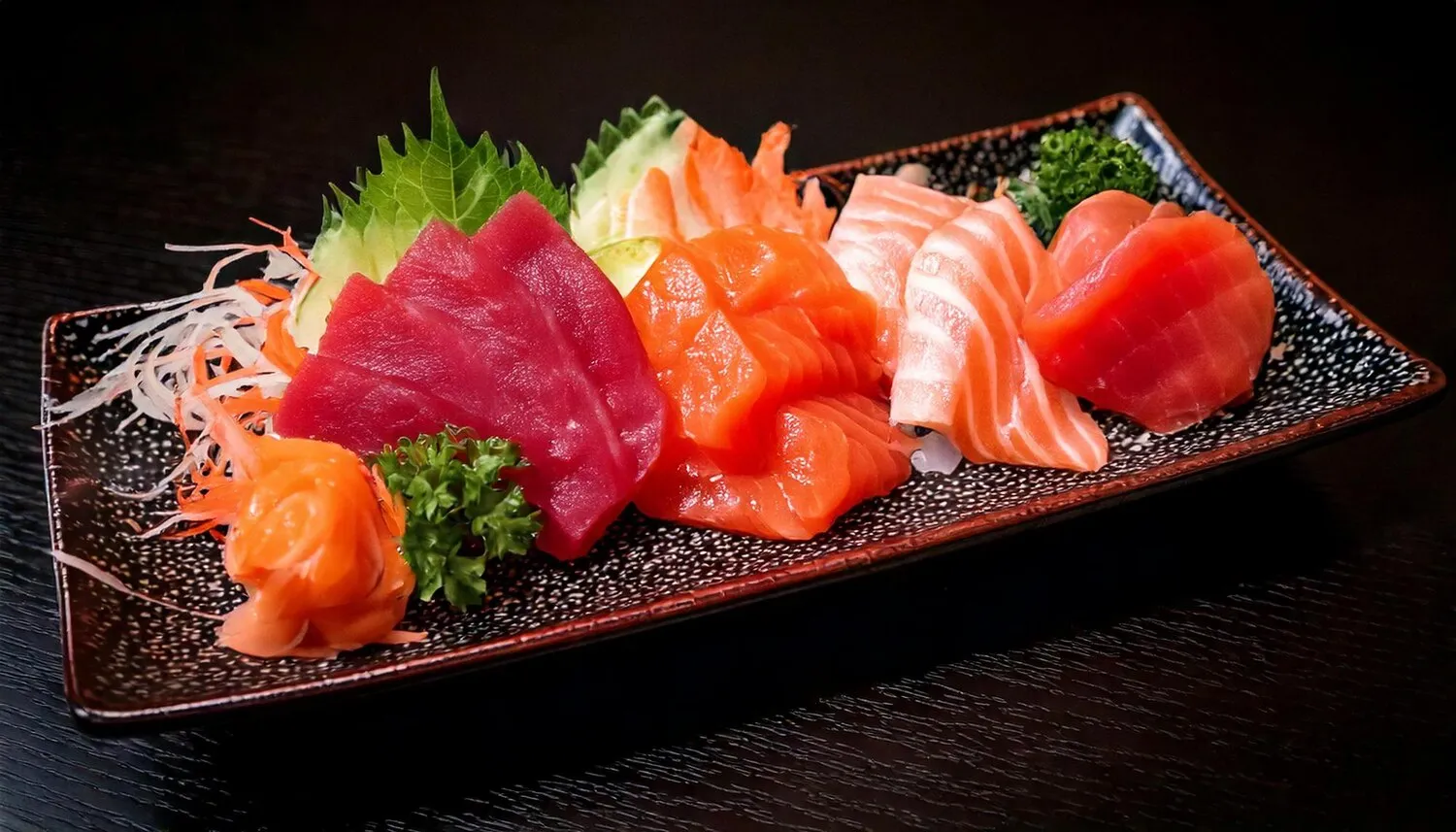
Sashimi
Thinly sliced raw fish, typically salmon or tuna.
Nutrition Facts
* The % Daily Value (DV) tells you how much a nutrient in a serving of food contributes to a daily diet. 2,000 calories a day is used for general nutrition advice.
The origins of sashimi can be traced back to ancient Japan, predating widespread cooking methods. It developed as a way to preserve and appreciate the freshest seafood, often consumed alongside vinegared rice. Improved preservation techniques and the development of sharper knives significantly contributed to its evolution into the refined dish we know today.
Sashimi is deeply ingrained in Japanese culinary culture, representing not only a food item but also respect for the ingredients and the skills of the chef. It is often associated with special occasions and formal dining.
Presentation
The presentation of sashimi is just as important as its taste. The slices are meticulously arranged, often with garnishes, to create a visually appealing and artistic display. This reflects the Japanese emphasis on aesthetics in food.
Freshness
Freshness is paramount in sashimi. Only the highest quality, impeccably fresh seafood is used, reflecting a deep respect for the natural resources and the importance of sourcing ingredients carefully. It is meant to highlight the natural, unadulterated flavors of the fish.
Knife Skills
Preparing sashimi requires exceptional knife skills. The slices must be cut precisely to ensure the optimal texture and flavor. Chefs undergo years of training to master these techniques, which are considered a form of art.
Sashimi offers a delicate and nuanced flavor profile centered around the pure, unadulterated taste of the fish. The subtle sweetness, umami, and slight salinity of the seafood are the primary flavors. The accompanying condiments enhance rather than mask these delicate notes.
The primary flavor is the inherent taste of the fish itself, be it the rich, buttery flavor of salmon, the clean, briny taste of tuna, or the subtle sweetness of scallop. Wasabi provides a sharp, pungent kick that cuts through the richness of the fish, while soy sauce adds saltiness and umami depth. Ginger, often served pickled, offers a palate-cleansing sharpness. Daikon radish, finely grated, provides a refreshing, slightly bitter counterpoint to the richer flavors.
Wasabi Usage
Avoid mixing wasabi directly into the soy sauce. Instead, place a small amount of wasabi on the fish and then dip the fish (not the rice) lightly into the soy sauce. This allows you to control the amount of wasabi and preserve the flavor of the fish.
Order of Consumption
It's generally recommended to eat milder-flavored sashimi first, progressing to the richer, more flavorful types. This allows you to fully appreciate the nuances of each fish without being overwhelmed by stronger flavors.
Soy Sauce Etiquette
Don't over-soak the sashimi in soy sauce, as it can mask the delicate flavors of the fish. Dip only the edge of the fish in the soy sauce. Pour only small amount of soy sauce in the container to minimize waste
Explore additional Raw Fish dishes and restaurants
Explore Raw FishDiscover top dining spots and culinary experiences in Rio Preto.
Explore Rio PretoLearn more about the food culture, restaurant scene, and culinary heritage of Brazil.
Explore Brazil